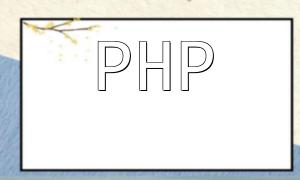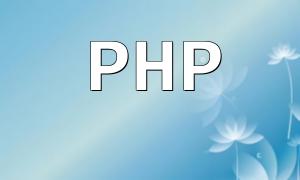Introduction:
Real-time notification functionality has become increasingly important in modern web applications. Users expect to receive updates instantly about content they are interested in. To achieve this, developers need to utilize the right technology and best practices to ensure efficient and stable message delivery. This article introduces PHP WebSocket development technology and shares best practice strategies for implementing real-time notification features.
WebSocket is a communication protocol based on TCP, providing a full-duplex communication channel that enables real-time, bidirectional data transfer between the client and the server. Unlike the traditional HTTP request-response model, WebSocket allows the server to push data to the client without the client needing to initiate the request. This makes WebSocket an ideal technology for implementing real-time notification features.
PHP is a widely used backend programming language for web application development. Although PHP does not natively support WebSocket communication, third-party libraries and extensions can be utilized to implement WebSocket functionality. Here are some common PHP WebSocket libraries and extensions:
1. Select the Appropriate WebSocket Library or Extension: Choose the right WebSocket library or extension based on the project’s needs. If the project requires advanced features such as multiple connections, rooms, etc., Ratchet may be a better choice. If the project is simpler and performance is more important, consider using Swoole.
2. Set Up an Appropriate Heartbeat Mechanism: Since WebSocket connections are persistent, ensuring their stability is crucial. Set up a heartbeat mechanism to regularly check the connection. If a heartbeat fails or the connection is broken, appropriate measures should be taken to reconnect.
3. Use Message Queues and Event-Driven Architecture: To handle large numbers of concurrent connections and efficiently push messages, it’s recommended to use message queues and event-driven mechanisms. When new messages arrive, they are placed in a message queue and processed and distributed through event-driven systems, ensuring efficient message delivery.
4. Optimize Performance: Real-time notification functionality often involves handling a large number of concurrent connections and message transfers, making performance optimization critical. Common optimization techniques include caching, data compression, and asynchronous processing, all of which can significantly improve performance.
5. Integrate with Frontend Frameworks: WebSocket is typically used in conjunction with frontend frameworks to improve the user experience. On the frontend, popular JavaScript frameworks like Vue.js or React.js can be used to build real-time notification interfaces.
Real-time notification functionality is crucial in modern web applications, not only to enhance the user experience but also to encourage user engagement. By leveraging PHP WebSocket technology and implementing best practice strategies, developers can easily achieve real-time notification features. Choosing the right WebSocket library based on project needs, setting up heartbeat mechanisms, utilizing message queues and event-driven architecture, optimizing performance, and integrating with frontend frameworks all contribute to ensuring the efficient and stable delivery of real-time messages.








